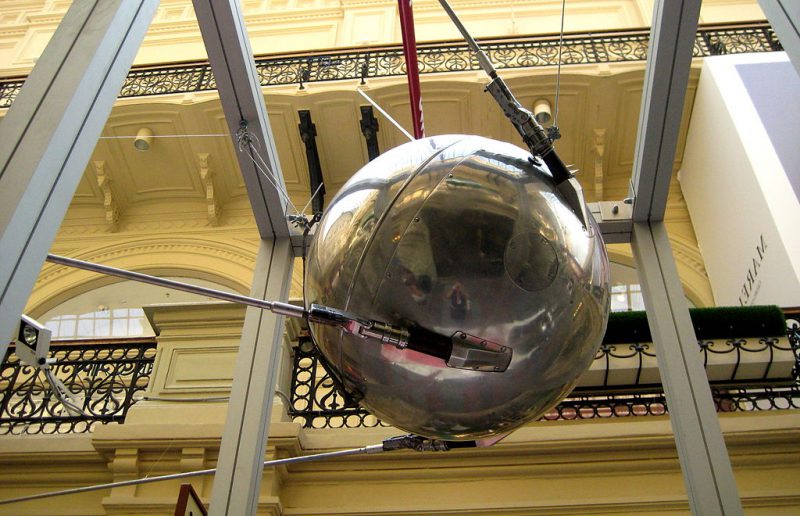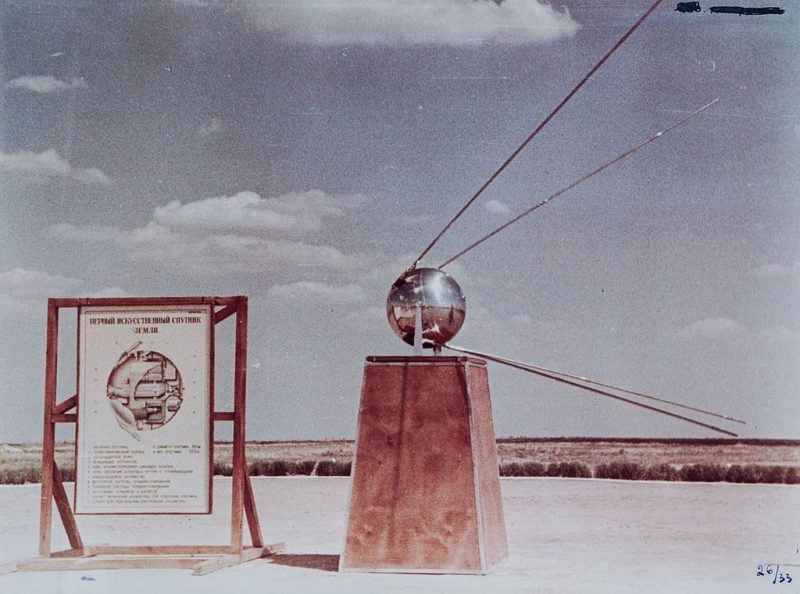Sputnik – Earth first artificial satellite
You surely heard the word Sputnik more than once. Sputnik in Russian means nothing else but satellite. This article will tell you things that you probably did not know about the Sputnik and what it meant for humanity as a whole.
On October 4, 1957, the USSR sent the first artificial satellite into Earth orbit. The satellite was named PS-1, it was launched into orbit by the rocket R-7 from the Baikonur cosmodrome.
The launch of the first satellite was preceded by a long work of scientists and designers. One of the founders of theoretical cosmonautics is famous Russian scientist Konstantin Eduardovich Tsiolkovsky. He developed the first theory of jet propulsion and practically predicted the appearance of liquid-fuel rockets, artificial earth satellites and orbital stations in his articles. Tsiolkovsky was an active popularizer of his ideas and left many followers behind him. Another key figure that worked on the satellite itself and godfather human exploration of space overall is Sergey Korolev.
The first satellite was quite small with a diameter of 58 centimeters and the weight 83.6 kilograms. PS-1 was equipped with four antennas thanks to which he got his recognizable appearance. The device consisted of two polished hemispheres made of aluminum alloy and bolted together. The edges were sealed with a rubber gasket.
Inside the Sputnik was a power unit (silver-zinc batteries weighing 50 kilograms), transmitter, fan, thermal control system, and various sensors.
Almost immediately after the separation of the satellite from the second stage of the rocket, PS-1 started to transmit a signal that was heard not only by experts but also by radio amateurs of almost all countries. From that moment the countdown of the space age of mankind began.
Despite being a success the launch nearly turned into a failure. Indeed, only after the reception of the first satellite signals and the results of telemetric data came the team learned that only a fraction of a second separated the launch from a failure. The time for entering the required mode was tightly controlled: in case it was exceeded, the launch would be automatically canceled. In fact, the unit entered the mode less than a second before the control time exceeded. Besides, at the 16th second of the flight, the tank emptying system failed, and due to the increased consumption of kerosene, the central engine shut down 1 second before the estimated time. In the end it all worked out.
Sputnik was flying for 92 days, until January 4, 1958, and made 1440 revolutions around the Earth (about 60 million km). Its radio transmitters operated for three weeks after launch. Eventually, the satellite lost speed, entered the dense layers of the atmosphere and burned due to friction with the air.
The results of the launch of Sputnik gave a serious impetus to the development of the Internet: due to the successful launch of Sputnik, the US Department of Defense forced the development of the ARPANET packet-switched telecommunications network based on the Paul Baran’s ideas that were initially rejected as impossible to implement. Partly as a result of the launch of Sputnik, the Agency for Advanced Defense Research and Development of the USA was also created.
In Russia, the launch date of Sputnik is celebrated annually as a memorable day of the Space Forces.

Now there are vehicles on Mars and around it the complexity of which is much greater than the complexity of PS-1. But in terms of significance of the event, the launch of the first satellite is only comparable to sending a man to space. We can only wish that the space industries of all countries and the related sciences would connect and work together in order to develop peaceful space technologies beneficial to all humanity, and that people would pay more attention to space than to the display of their fashionable smartphone.







